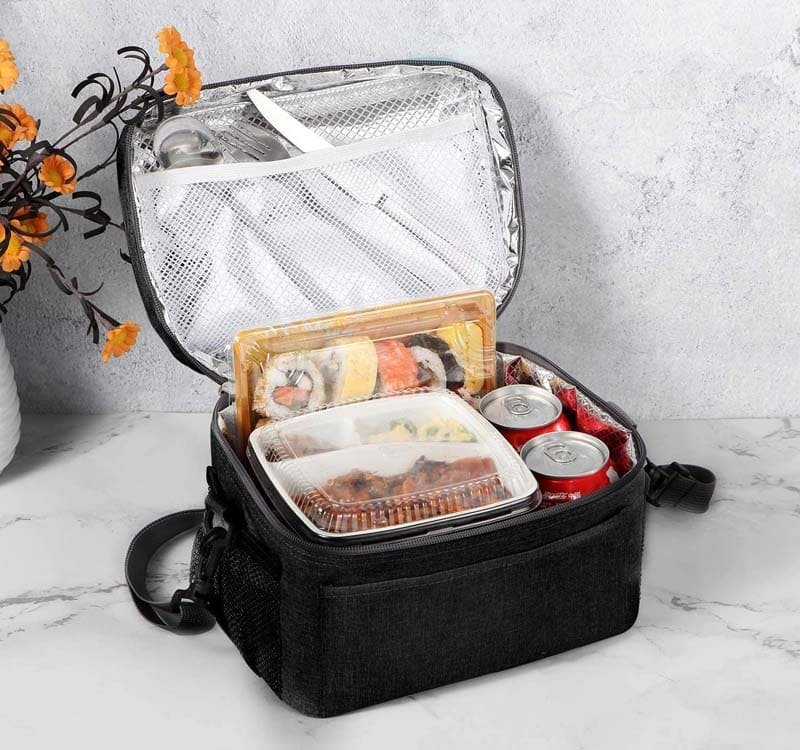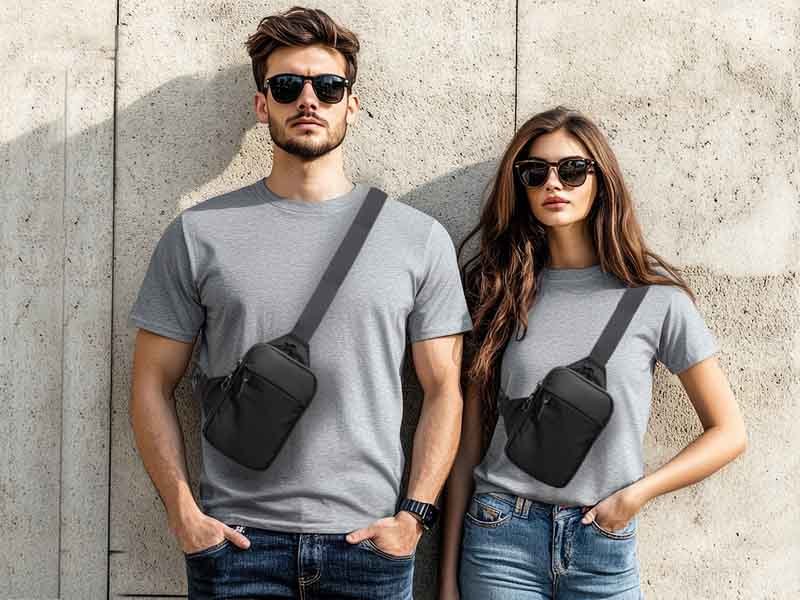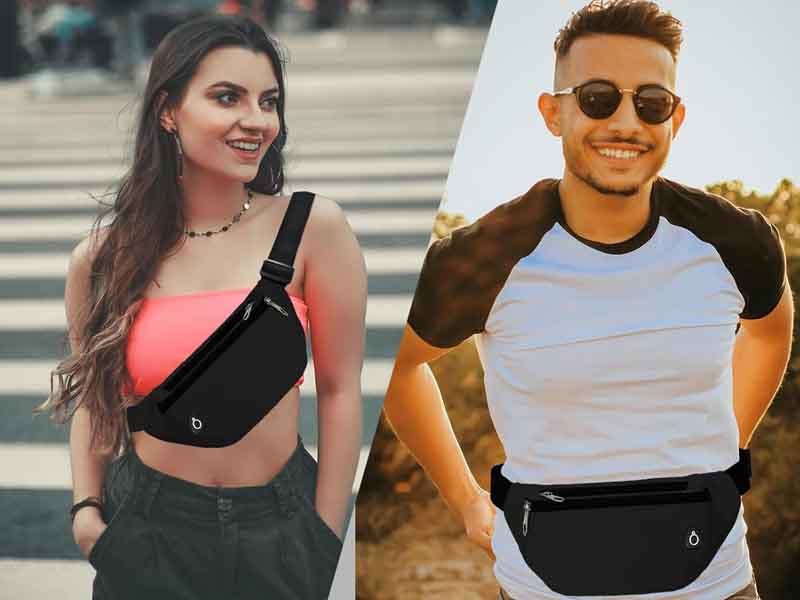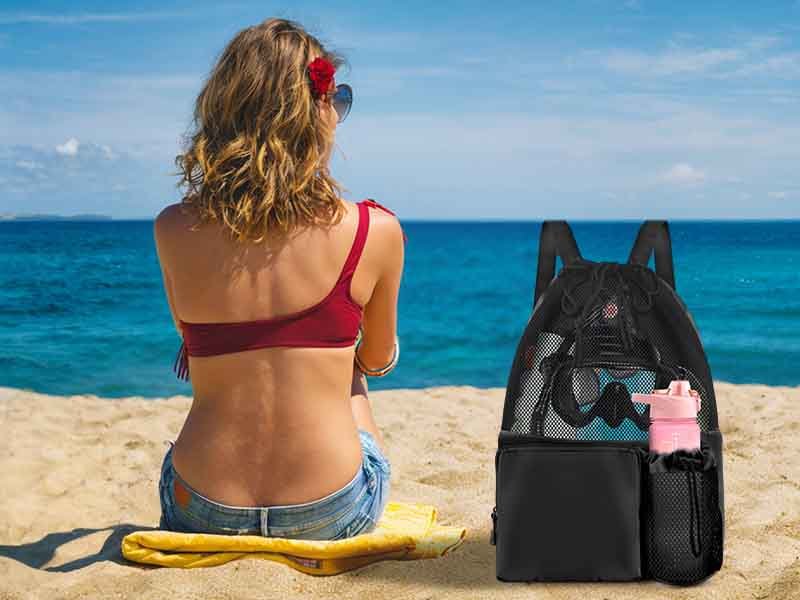
Packing a meal in a flimsy plastic bag or disposable foam container might seem “good enough,” but ask anyone who’s soggy sandwich, lukewarm soup, or mystery meatloaf has ever ruined lunch—and they’ll tell you there’s a better way. In the past decade, lunch bags—especially insulated models—have exploded from school yards to corporate offices, heralded for keeping meals fresh, safe, and far more appetizing. But are they truly worth the investment, or just another aisle gimmick?
Lunch bags—particularly insulated versions—offer temperature regulation, leak protection, and organized compartments that extend meal freshness, reduce single-use waste, and deliver daily convenience, making them a worthwhile upgrade over disposable containers for health, cost savings, and environmental impact.
Imagine pulling out a vibrant, cool salad at noon on a sweltering summer day or savoring piping-hot chili on a blustery winter afternoon—all without a microwave or clamshell plastic box. That’s the power of the right lunch bag. Later, we’ll unpack exactly what makes lunch bags unique, how they enhance food quality, which features matter most, and whether they truly save you money and plastic waste.
What Makes a Lunch Bag Different from Other Food Containers?
A lunch bag combines soft-sided flexibility with integrated thermal insulation, spacious organization, and durable, wipe-clean fabrics, distinguishing it from rigid lunch boxes or flimsy plastic wraps. Its layered construction—foam or gel cores plus reflective liners—maintains safe eating temperatures, while external pockets and ergonomic straps enhance portability and on-the-go access, features rarely found in traditional food-storage options.
When evaluating lunch-time carriers, it’s easy to default to familiar Tupperware or plastic sandwich bags, but lunch bags introduce a suite of functional improvements that address key pain points:
1. Thermal Performance and Food Safety
Traditional rigid containers lack sufficient insulation. Studies show that without proper insulation, perishable foods enter the “danger zone” (40–140°F) within 1–2 hours at room temperature, accelerating bacterial growth .
Lunch Bag Insulation:
- Foam Interiors: Closed-cell polyethylene foam (5–10 mm) slows heat transfer by up to 70%, preserving cold items at <40°F or hot items at >140°F for 4–6 hours.
- Gel Inserts: Removable freezer packs can boost cold retention by an additional 2–3 hours—crucial for long commutes or outdoor work.
- Reflective Liners: Mylar layers reflect radiant heat, providing lightweight insulation for slimmer, more compact bags.
In contrast, rigid lunch boxes with no insulating layer allow internal temperatures to fluctuate rapidly, making them unsuitable for hot soups or ice-cold salads unless paired with a separate cooler.
2. Adaptability and Flexibility
- Soft-Sided Conformity: Lunch bags collapse when empty, tuck into backpacks, and expand to accommodate containers of varying shapes—ideal for non-standard meal-prep containers (e.g., mason jars, thermos).
- Rigid Lunch Boxes: Offer precise compartments but require specific container sizes and cannot adapt to bulky items or folding into tight spaces.
3. Organizational Efficiency
The best lunch bags address more than temperature—they organize:
- Internal Dividers and Mesh Pockets: Keep snacks, sauces, and utensils separate, reducing the risk of cross-contamination and soggy meals.
- External Pouches: Provide quick access to keys, phones, or napkins without opening the main compartment.
- Structured Lunch Boxes: May include rigid dividers but lack external storage or dynamic spacing, limiting multitasking and on-the-go convenience.
4. Portability and Ergonomics
Lunch bags excel at hands-free and multi-modal transport:
- Handles and Straps: Padded top handles, adjustable shoulder straps, or even backpack-style harnesses distribute weight and free hands—essential for commuters.
- Rigid Boxes: Often designed for hand-carry only, providing no strap options and becoming cumbersome when paired with other baggage.
5. Durability and Maintenance
- Exterior Fabrics: High-denier polyester, RPET canvas, or waterproof nylon withstand abrasion, resist staining, and clean easily with a damp cloth.
- Interior Liners: Food-safe PEVA or TPU coatings repel spills and odors; most lunch bags allow full-liner removal for deeper cleaning.
- Plastic Containers and Bags: Prone to cracking, staining, odor retention, and single-use disposal after a few cycles.
6. Sustainability and Cost-Effectiveness
- Reusable Lunch Bags: One bag replaces hundreds of single-use plastic bags and disposables annually, reducing landfill waste by up to 200–300 items per year.
- Rigid Containers: Also reusable but often supplemented by plastic sandwich bags, doubling waste.
- Lifecycle Analysis: Even at $30–$50 per insulated lunch bag, the investment breaks even after 20–30 uses compared to disposable-packaging costs, making lunch bags both eco-friendly and economical.
Insulated Lunch Bag vs Lunch Box vs Disposable Bags/Wraps
| Feature | Insulated Lunch Bag | Rigid Lunch Box | Disposable Bags/Wraps |
|---|---|---|---|
| Insulation | Foam/gel/Mylar layers (4–6 hr) | None | None |
| Flexibility | High (collapsible) | Low | Medium |
| Organization | Multi-pockets/dividers | Fixed compartments | None |
| Portability | Handles + straps | Hand-carry | Hand-carry |
| Durability | High (600D RPET/Nylon) | Medium (hard plastic) | Low |
| Maintenance | Wipe-clean, removable liner | Dishwasher safe | Single-use |
| Sustainability | Reusable (2–5 yr lifespan) | Reusable (5+ yr) | Disposable |
What Are Insulated Lunch Bags?
Insulated lunch bags are carriers with built-in thermal barriers—typically foam and reflective liners—designed to keep food at safe, enjoyable temperatures. They outperform regular tote-bags by 5–8°C in cold retention and maintain hot items for hours, making them essential for meal prep enthusiasts and outdoor workers alike.
Is a Lunch Box Better Than a Lunch Bag?
Lunch boxes—rigid, compartmentalized containers—provide structural protection for delicate foods but often lack insulation, making them suboptimal for temperature control. Lunch bags, with their flexible, insulated design, strike a balance between physical protection and thermal performance, offering broader versatility for daily commuters.
How Do Lunch Bags Improve Food Quality, Safety, and Convenience?
By stabilizing temperatures, lunch bags inhibit bacterial growth, preserve taste and texture, and prevent spoilage. Leak-proof seams and secure closures contain sauces and juices, while compact organization reduces prep time. The result: healthier meals, less waste, and a stress-free midday experience wherever you are.
The true value of lunch bags lies in their ability to deliver a fresh, safe meal far from home. Here’s how they do it:
- Temperature Regulation & Food Safety
- Bacteria Growth Thresholds: The “danger zone” for perishable foods is 40–140°F. Left outside, cooked proteins and dairy quickly invite pathogens. Insulated bags slow temperature drift, keeping meals out of that zone for up to 6 hours.
- Cold Chain Maintenance: For those using gel packs, lunch bags replicate mini-cooler performance, preserving freshness of salads, sashimi bowls, or smoothies longer than ice-free carriers.
- Hot Meal Retention: Thick-walled lunch bags used with heated food pouches enable warm entrées or hearty soups at midday, enhancing enjoyment and nutrition.
- Leak & Spill Prevention
- Welded Seams & Waterproof Liners: Modern lunch bags feature ultrasonic-welded interior seams and PEVA liners that channel spills to corners, preventing cross-contamination.
- Double-Zipper Waterstop Designs: Some high-end models incorporate rain-gasket zippers to seal out moisture—critical for outdoor picnics or marine environments.
- Meal Organization & Portion Control
- Compartmentalization: Built-in dividers and snack pouches help portion meals, support dietary plans, and prevent mixing of flavors.
- Utensil Integration: Elastic loops or mesh pockets keep cutlery and napkins handy, eliminating rummaging in backpacks or fridge doors.
- On-the-Go Convenience
- Quick Access Openings: Wide-mouth zippered tops or U-shaped openings allow clear view and easy retrieval of items—important for busy professionals.
- Compact Storage: Collapsible designs tuck into minimal space once meal is eaten, unlike bulky Tupperware sets.
- Impact on Eating Habits
- Meal Prep Adoption: Studies show meal-preppers using lunch bags are 30% more likely to stick to healthy eating plans, thanks to reliable food quality and easy portion control.
- Reduced Food Waste: A well-insulated bag keeps leftovers edible longer, cutting workplace and school waste by up to 25%.
Which Features Should You Look for in a High-Quality Lunch Bag?
Prioritize insulation type (thicker foam or gel-pocket designs), food-safe waterproof liners, durable outer fabrics (600D nylon, RPET), secure closures (double-zip seals), and practical pockets/straps. Ergonomic handles, adjustable shoulder straps, and compartmental dividers further boost daily usability and longevity.
Choosing the right lunch bag means matching features to your lifestyle. Consider these critical elements:
- Insulation Performance
- Foam Thickness (5–10 mm): Denser foam holds temperatures longer but adds bulk.
- Gel Pack Integration: Removable gel inserts extend cold retention by 2–3 hours—ideal for long commutes or outdoor work.
- Reflective Liners: Thin Mylar layers add temperature control without significant weight.
- Materials & Durability
- Outer Shell:
- 600D Polyester/Nylon: Resists tears and scuffs; easy to wipe.
- RPET Canvas: Made from recycled plastic bottles; stronger environmental story.
- Liner Fabric:
- PEVA: Food-safe, PVC-free, odor-resistant.
- TPU Lamination: More eco-friendly, higher tear resistance, and maintains clarity.
- Outer Shell:
- Closure Systems
- Zippers: Durable coil or molded-plastic zips with water-resistant flaps prevent leaks.
- Velcro/Magnetic Flaps: Quick access but less weatherproof—best for dry, indoor use.
- Storage & Organization
- External Pockets: For napkins, utensils, or keys—keeps wet and dry items separate.
- Internal Dividers: Adjustable Velcro panels let you customize compartments for bottles, jars, or flat containers.
- Mesh Side Pockets: Perfect for ice packs or water bottles.
- Portability & Ergonomics
- Handles vs. Straps: Padded top handles for quick grabs; detachable shoulder straps for hands-free carry.
- Backpack Straps: Integrated sling design transforms bag into commuter gear.
Best Insulated Lunch Bags for Adults
- Urban Commuter Pro: 8L capacity, 8mm foam, gel-pack sleeve, 600D RPET shell, double-seam zippers, collapsible flat.
- Gourmet Chef Tote: 5L, reflective Mylar liner, multiple cutlery pockets, heat-sealed seams, vegan leather accents.
- Outdoor Expedition Pack: 12L, hybrid foam+reflective, external bottle pockets, backpack straps, waterproof base.
| Feature | Urban Commuter Pro | Gourmet Chef Tote | Outdoor Expedition |
|---|---|---|---|
| Insulation | High (8mm foam + gel) | Medium (reflective) | Very High (hybrid) |
| Capacity | 8 L | 5 L | 12 L |
| Outer Material | RPET 600D | Nylon with vegan leather | Waterproof nylon |
| Straps | Shoulder + handle | Handle only | Backpack + handle |
| Price | $40 | $35 | $50 |
Selecting the right combination of materials, insulation, and ergonomic features ensures your lunch bag matches both daily routines and performance expectations.
Are Lunch Bags Cost-Effective Compared to Disposable Options?
While an insulated lunch bag costs $20–$50 upfront, it typically pays for itself within 50–100 uses, saving on $1–$2 per disposable container or bag. Over one year, net savings can reach $200–$400, not to mention reductions in single-use plastic waste and landfill impact.
Upfront Investment vs. Long-Term Savings
- A quality insulated lunch bag typically costs $20–$50, whereas a single-use plastic bag or foam container runs $0.10–$1.00 per use.
- If you pack lunch daily, replacing disposables costs roughly $200–$300 per year, while a reusable bag pays for itself in 40–100 uses—often within one academic or work semester.
Environmental and Hidden Cost Benefits
- Disposable bags and containers generate 200–300 pieces of plastic waste per user annually—waste disposal, recycling fees, and environmental cleanup carry hidden societal costs.
- Reusable lunch bags reduce landfill burden, slashing single-use packaging by >90%, and avoid the health risks of BPA or microplastic leaching when food contacts plastic.
Durability and Replacement Cycles
- A well-made lunch bag, with proper care, lasts 2–5 years, whereas rigid plastic boxes may crack in 1–2 years and cling wrap needs constant repurchasing.
- Factoring in the cost-per-use over a 5-year span (e.g., $40/1,250 uses = $0.032/use) versus disposables (at $1/use), lunch bags are 20–30× more cost-effective, not to mention more convenient and eco-friendly.
How Do You Clean, Maintain, and Extend the Life of Your Lunch Bag?
Empty and shake out crumbs daily, wipe interiors with a damp cloth and mild soap weekly, and fully air-dry before storage. For linings with removable gel packs, hand-wash liners monthly. Avoid machine washing unless specified, and treat stains promptly with baking soda or diluted vinegar solutions.
Daily Cleaning & Quick Wipe-Down
- Empty crumbs and scraps immediately after each use—shake bag upside-down over the sink or trash.
- Use a damp microfiber cloth or food-safe wipe to spot-clean spills before they set.
- Zip the bag closed and let it air out (unzipped) to prevent moisture buildup and odors.
Weekly Deep Clean
- Remove any gel packs or ice inserts and hand-wash them separately.
- Line the interior with a mild soap solution (a drop of dish soap in warm water), gently scrub with a soft sponge, then rinse with clean water.
- Wipe the outer fabric with a damp cloth; for stubborn stains on polyester or RPET canvas, use a soft-bristle brush and mild detergent.
- Fully air-dry upside-down in a ventilated area—never tumble-dry or expose to direct heat.
Ongoing Maintenance & Longevity Tips
- Treat the exterior fabric with a water-repellent spray every 3–6 months to help shed stains and moisture.
- Check seams and zippers regularly; apply a silicone-based zipper lubricant or beeswax to keep zips running smoothly.
- Store the bag unzipped in a cool, dry place to maintain insulation integrity and prevent mildew—avoid cramped, sealed containers.
Ready to Elevate Your Lunch Bags Solutions?
Whether you need to custom insulated lunch bags,personalized cooler bags, eco-friendly RPET designs, or branded promotional meal kits, Szoneier offers 18+ years of end-to-end expertise—from material R&D and free design mockups to low-MOQ sampling and rapid OEM/ODM production. Contact us today to create lunch bags that keep meals fresh, reinforce your brand, and delight customers every day.
manufacturer Categories
- Custom Tote Bags Manufacturer
- custom backpacks Manufacturer
- custom travel bags& Duffle bags manufacturer
- custom makeup bags & toiletry bags manufacturer
- custom cooler bags manufacturer
- custom drawstring bags manufacturer
- custom makeup bags & toiletry bags manufacturer
- custom golf bags manufacturer
- custom fireproof bags manufacturer
- custom dry bags manufacturer
- custom ski bags manufacturer
- custom gym & sports bags manufacturer
- custom laptop bags manufacturer
- custom tactical bags manufacturer
- custom beach bags manufacturer
- custom medical bags manufacturer
- custom camera bags manufacturer
- custom wetsuits manufacturer
- custom leather goods manufacturer
- more personalized products
Can't find the answers?
No worries, please contact us and we will answer all the questions you have during the whole process of bag customization.
Make A Sample First?
If you have your own artwork, logo design files, or just an idea,please provide details about your project requirements, including preferred fabric, color, and customization options,we’re excited to assist you in bringing your bespoke bag designs to life through our sample production process.




